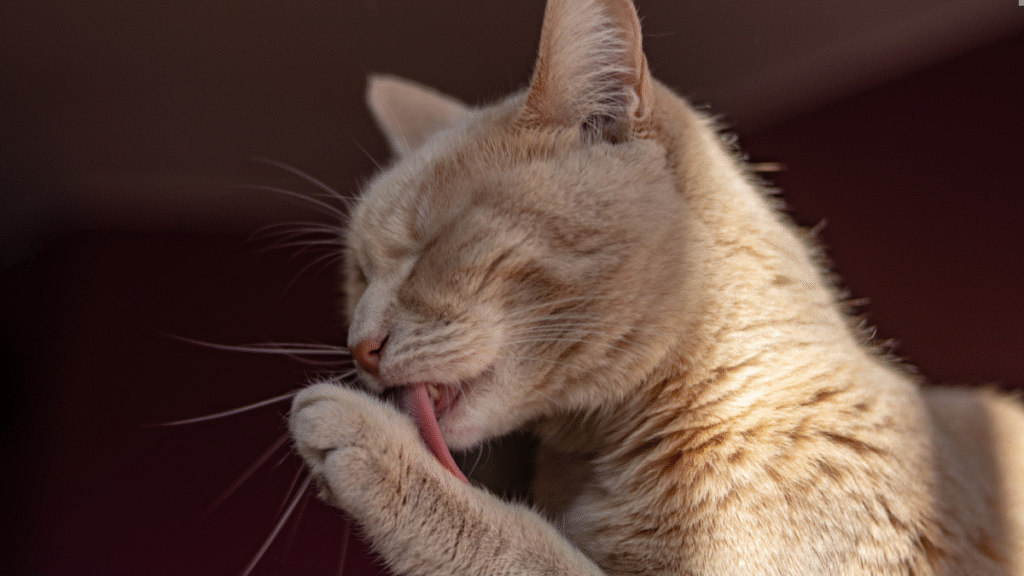For many of us, daily life with a cat can quickly turn into an exercise in constant cleaning and deodorizing. Cleaning out the litter box is probably the least favorite chore for any cat parent. Thankfully, technology has come to the rescue. In recent years, some of the most convenient, clever, and innovative pet products have hit the market—and the self-cleaning litter box is without a doubt the ultimate must-have for cat owners. Today, these boxes are more efficient than ever, offering better hygiene and less maintenance than before.
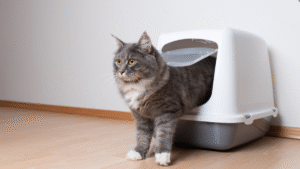
What Is a Self-Cleaning Litter Box?
A self-cleaning litter box is an automatic waste-removal system that eliminates the need for manual scooping. Also known as an automatic litter box, it typically uses sensors, rakes, or rotating mechanisms to separate solid and liquid waste from clean litter, moving it into a sealed compartment.
Most self-cleaning litter boxes are powered by electricity or batteries, and many come equipped with smart technology that can track your cat’s bathroom habits, send alerts, and sync with your smartphone.
The main purpose is to keep the litter box consistently clean, reduce odors, and minimize the time owners spend maintaining it.
Related:10 Most Popular Cat Breeds
How Does a Self-Cleaning Litter Box Work?
Different types of self-cleaning litter boxes use various mechanisms, but most operate in a similar way. Below is a step-by-step look at how these automatic litter boxes function.
1. Your cat does their business.
Once your cat finishes and exits the litter box, motion sensors detect the absence of movement. After a short delay (usually a few minutes), the cleaning cycle begins.
2. Activation of the cleaning mechanism.
The cleaning mechanism—whether a rake or rotating drum—activates and starts separating waste from the clean litter.
3. Separation and disposal of waste.
Clumps and solid waste are sifted out and moved into a sealed waste compartment.
4. Odor control and containment.
The waste drawer is sealed and often fitted with a carbon filter or odor-absorbing pad to trap smells. You’ll simply need to empty the compartment every few days.
5. Leveling and readiness for next use.
After the cleaning cycle, the litter bed is leveled and ready for the next visit.
Advanced models like the Litter-Robot or CatGenie take automation a step further. The CatGenie, for example, connects to your home plumbing and uses washable granules instead of litter, flushing waste away completely.
Types of Self-Cleaning Litter Boxes
Not all self-cleaning litter boxes are the same. There are several types and design variations on the market today. Here are the most common:
1. Rake-Based Self-Cleaning Litter Boxes
Rake-based litter boxes are among the most common. A motorized rake automatically sifts through clumping litter, pushing solid waste into a covered compartment.
A popular example is the PetSafe ScoopFree, which uses disposable trays replaced every few weeks.
Pros:
-
Easy to set up
-
Works with regular clumping litter
-
Simple to maintain
Cons:
-
The rake mechanism can jam
-
Requires periodic replacement of trays or liners
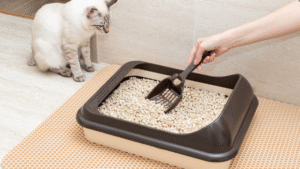
2. Rotating Drum Self-Cleaning Litter Boxes
Rotating drum litter boxes feature a spherical or cylindrical chamber that rotates to sift the litter and separate waste. The Litter-Robot is a well-known example, using gravity and rotation for efficient cleaning.
Pros:
-
Minimal odor and mess
-
Ideal for multi-cat households
-
Requires less frequent maintenance
Cons:
-
Bulky and expensive
-
Requires specific clumping litter types
-
Some cats may need time to adjust
3. Flushing Self-Cleaning Litter Boxes
Flushing litter boxes are advanced systems like the CatGenie, which connect directly to your home’s plumbing and sewer lines. These use special washable granules instead of traditional litter and automatically flush waste away.
Pros:
-
No litter replacement needed
-
Completely eliminates scooping
-
Excellent odor control
Cons:
-
Complex setup (requires a water line and drain access)
-
Expensive
-
Dependent on electricity and plumbing
4. Conveyor or Sifting Tray Self-Cleaning Litter Boxes
Some newer models use conveyor belts or layered trays to sift and transfer waste into a disposal compartment. This is the least common design but tends to be more compact than others.
Benefits of a Self-Cleaning Litter Box
Many cat owners are switching to automatic litter boxes because of their many advantages over traditional ones. Here are the top benefits:
1. Convenience and Time Savings
Cleaning a traditional litter box can be tedious, especially in multi-cat households. Automatic litter boxes handle the cleaning for you, saving time each day and keeping the litter box fresh around the clock.
2. Odor Control
Quick removal of waste into a sealed compartment greatly reduces unpleasant odors in your home. Most models include carbon filters or odor-neutralizing crystals for enhanced freshness.
3. Better Hygiene
A consistently clean litter box means a cleaner environment for your cat. Reduced waste buildup also helps prevent bacteria and mold, which can cause respiratory or urinary issues.
4. Encourages Regular Use
Cats are naturally clean animals and can refuse to use a dirty litter box. A self-cleaning system ensures your cat always has a fresh space, promoting healthy litter box habits.
5. Ideal for Multi-Cat Households
In homes with multiple cats, litter boxes can get messy fast. An automatic system keeps the box clean for every cat, minimizing territorial disputes and stress.
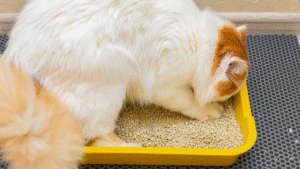
Drawbacks and Things to Consider
Despite their advantages, self-cleaning litter boxes may not be perfect for everyone. Here are a few things to keep in mind before buying one:
1. Cost
Automatic litter boxes can be expensive, ranging from around $150 for entry-level models to over $700 for high-end versions. Some also require proprietary litter or disposable trays, adding to ongoing costs.
2. Noise
The cleaning mechanism can be noisy and may startle sensitive cats. It’s best to place the unit in a quiet but accessible location.
3. Maintenance and Cleaning
While self-cleaning boxes handle the daily cleaning, you still need to empty the waste drawer, clean sensors, and occasionally wash the interior to prevent buildup.
4. Power and Connectivity Issues
Because these litter boxes depend on electricity, a power outage will temporarily disable cleaning. Smart models connected to Wi-Fi can also experience connectivity problems.
5. Cat Compatibility
Not every cat will immediately accept an automatic litter box. Some may be wary of the movement or noise. Be patient and introduce the box gradually.
Tips for Choosing the Best Self-Cleaning Litter Box
When shopping for an automatic litter box, keep these factors in mind to find the best one for your cat’s needs and your lifestyle.
-
Cat Size and Number: Choose a box large enough for your cat to move comfortably. For multi-cat households, select a model designed for multiple users.
-
Type of Litter: Ensure the box is compatible with your preferred litter type. Some work only with clumping clay, while others use silica crystals or reusable granules.
-
Ease of Maintenance: Look for removable parts, washable trays, and easy-to-access waste drawers.
-
Odor Control Features: Opt for covered waste compartments and carbon filters to keep your home smelling fresh.
-
Noise Level: If your cat is sensitive to sound, select a quieter model or one with adjustable cleaning cycles.
-
Smart Features: Some modern litter boxes track your cat’s bathroom habits, send alerts when the waste drawer is full, and integrate with mobile apps—ideal for monitoring your cat’s health.
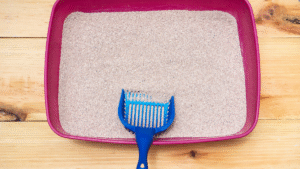
Maintenance and Care Tips
Self-cleaning litter boxes require less maintenance than traditional ones, but they still need occasional care. Follow these tips to keep yours running smoothly:
-
Empty the waste compartment regularly (every 3–7 days).
-
Replace litter or granules as recommended.
-
Clean sensors and rakes monthly to prevent malfunction.
-
Wipe down the interior with a pet-safe cleaner to prevent odor buildup.
-
Monitor your cat’s behavior—if they stop using the box, investigate the cause immediately.
Final Thoughts
A self-cleaning litter box is both a convenience and a worthwhile investment in your cat’s health and your home’s cleanliness. While the upfront cost and occasional maintenance may seem high, the time, effort, and odor reduction usually make it well worth it—especially for busy pet owners.
Now that you understand how self-cleaning litter boxes work, their pros and cons, and what features to look for, you’re ready to choose the right model for your cat and lifestyle.
If you’re tired of daily scooping and lingering odors, a self-cleaning litter box might just be the game-changing solution you’ve been waiting for.
- Homemade Calming Spray To Help Dogs During Training - November 12, 2025
- 7 DIY Dog Training Tools You Can Make From Household Items - November 12, 2025
- How To Make Your Own Clicker For Dog Training - November 12, 2025
